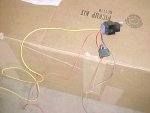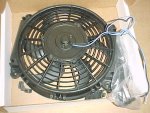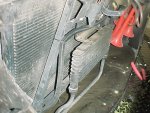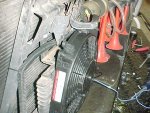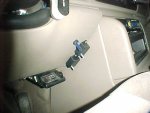I couldn't think of another title. I am sharing some information that I think is going to be helpful to some of you, and it goes to the concerns of CP induced rod issues.
I completed a series of tests to determine just what kind of heat is going into the manifold with the air charge...part of an induction series I am doing.
The concern being, that a wide range of charge temps brings up the liklihood that the CP peak, LPP, is getting advanced as temps increase. IOW, all other things unchanged, as manifold inlet temperature, MIT, increases, ignition delay period decreases and combustion progresses at an increased rate, shorter period. These are facts. What is also fact is that the PCM does not account for MIP disparity prior to 06. So if MIT spikes from what is normally seen, what will happen is that LPP, location of peak pressure will steadily advance, power will drop, and pressure will sharply increase as LPP appraoches TDC...bent rods, cavitation erosion, etc can result.
I was very shocked to see MIT run up to 390 F, at a measly 23 psi, otherwise stock truck with a 150 IAT. Normally I see it around 250 tops. Why the difference? Heat soak. I had done 3-4 0-60 runs with quick decelerations, just to see CAC heat soak conditions.
Along with this heat soak, IAT also tends to climb, in this case to 150F. That added heat, as we know, is devastating to the heat of compression, and COT was 475 F. IOW very lousy CAC efficiency after heatsoak at low speed.
My guess is you guys go out there, start spinning tires, sitting around at idle, and the CAC gets hot in the process. This will show itself as warming IAT also, as I said. So my recommendation is this: When you are programming, program in some IAT retard, say 1-2 degrees for every 10 F of IAT increase over 90 F.
I don't drag, but this makes perfect sense to me, from what i am hearing from you all. I will post the charts if desired.
Edit: Nomenclature
C-compressor
O-outlet
T-temp
M-manifold
I-inlet
T-temp
P=Pressure
I completed a series of tests to determine just what kind of heat is going into the manifold with the air charge...part of an induction series I am doing.
The concern being, that a wide range of charge temps brings up the liklihood that the CP peak, LPP, is getting advanced as temps increase. IOW, all other things unchanged, as manifold inlet temperature, MIT, increases, ignition delay period decreases and combustion progresses at an increased rate, shorter period. These are facts. What is also fact is that the PCM does not account for MIP disparity prior to 06. So if MIT spikes from what is normally seen, what will happen is that LPP, location of peak pressure will steadily advance, power will drop, and pressure will sharply increase as LPP appraoches TDC...bent rods, cavitation erosion, etc can result.
I was very shocked to see MIT run up to 390 F, at a measly 23 psi, otherwise stock truck with a 150 IAT. Normally I see it around 250 tops. Why the difference? Heat soak. I had done 3-4 0-60 runs with quick decelerations, just to see CAC heat soak conditions.
Along with this heat soak, IAT also tends to climb, in this case to 150F. That added heat, as we know, is devastating to the heat of compression, and COT was 475 F. IOW very lousy CAC efficiency after heatsoak at low speed.
My guess is you guys go out there, start spinning tires, sitting around at idle, and the CAC gets hot in the process. This will show itself as warming IAT also, as I said. So my recommendation is this: When you are programming, program in some IAT retard, say 1-2 degrees for every 10 F of IAT increase over 90 F.
I don't drag, but this makes perfect sense to me, from what i am hearing from you all. I will post the charts if desired.
Edit: Nomenclature
C-compressor
O-outlet
T-temp
M-manifold
I-inlet
T-temp
P=Pressure
Last edited:



